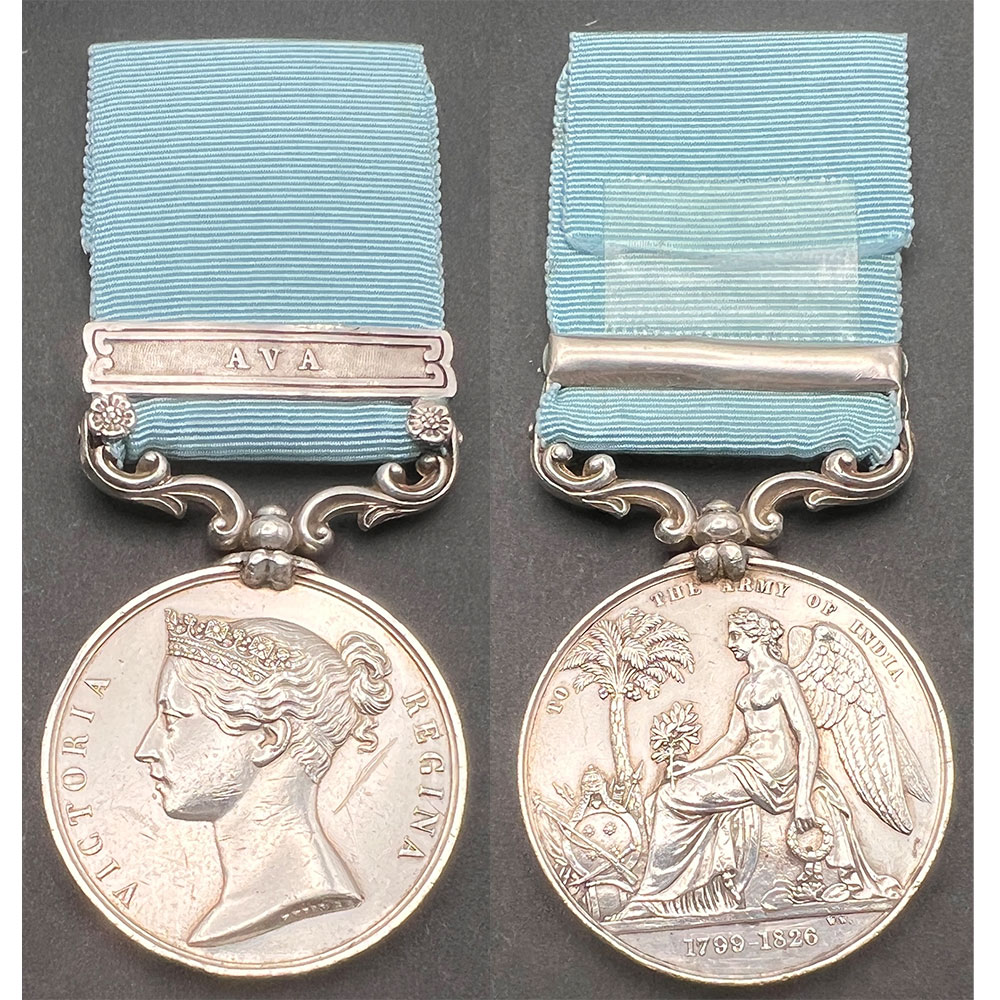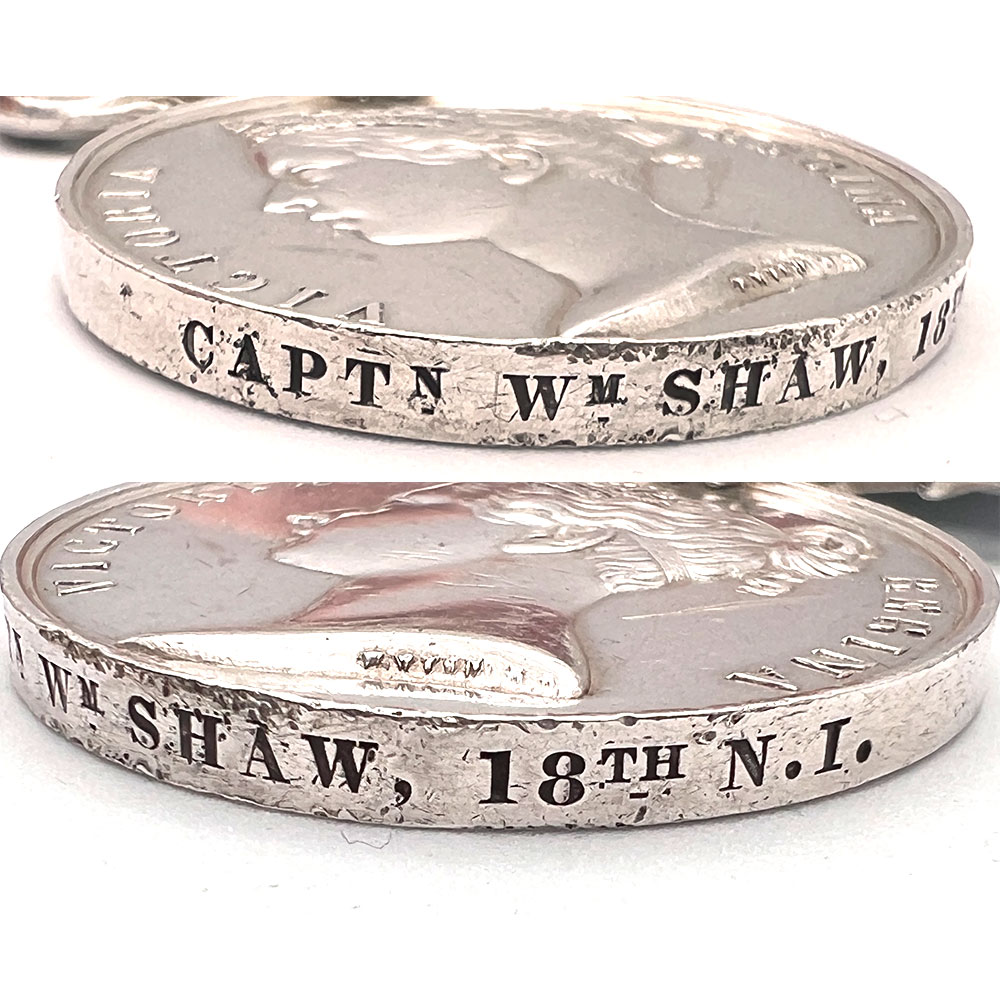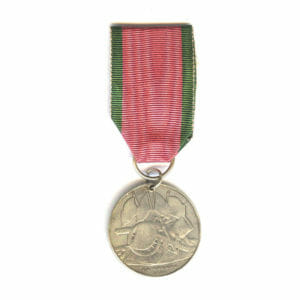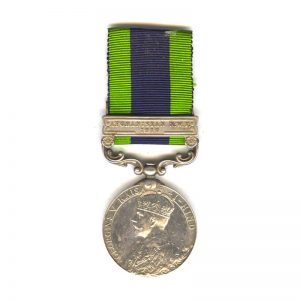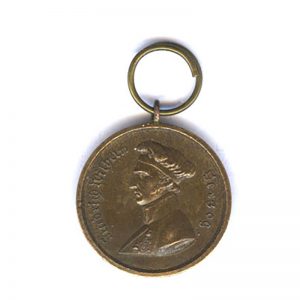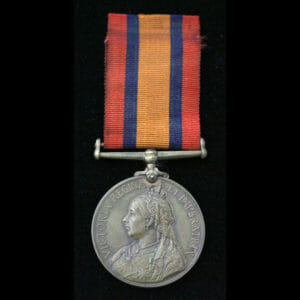Description
Army of India, bar Ava, Captain William Shaw 18th Regiment of Native Infantry, during the Anglo Burmese War of 1824-26.
Officially impressed: “Captn Wm Shaw. 18th N.I.” Some edge knicks and wear.
Captain William Shaw served in the First Anglo-Burmese War of 1824-6, with the 18th Regiment of Native Infantry.
William Shaw was first commissioned during 1805 according to East India Army Lists.
Government Gazette India, 7th May 1807: 31st (Native Infantry), Ensign and Adjutant Wm Shaw to have the Rank of Lieutenant.”
Army List 1823, just before joining the 18th NI shows:
Captain William Shaw, in the Tenth Regiment of Native Infantry since 18th March 1809, promoted to Captain 6th December 1819.
Asiatic Intelligence, Madaras, 1823, records: “Brevet Captain W. Shaw, 10th Regiment, Native Infantry, to be Postmaster to Hyderabad Subsidiary Force.”
Listed in the 1828 East India Register, as having been a Captain since 6th December 1821, and having served with the Eighteenth Regiment of Native Infantry since 17th March 1824.
Government Gazette, India, 24th December 1832:
“ARRIVALS AT THE PRESIDENCY-….Captain William Shaw, 18th Regiment N.I. from Dindigul”
He retired after a long career with the rank of Major on 5th July 1839.
Shown on the 1859 Army List of Retired Officers of the Bengal, Madras and Bombay Presidencies as a retired Lieutenant Colonel “William Shaw, Madras Native Infantry”, dated 28th November 1854.
The force that fought in the Anglo-Burmese War was about 10,000 strong and consisted of:
H.M. 13th, 38th, 41st and 89th Regiment, all the British units.
The Madras European Regiment, 3rd, 7th, 9th, 12th, 18th (Shaw’s unit), 34th and 43rd Regiment of Madras, along with the 20th Regiment Bengal Native Infantry.
Capt Doveton recalls, after listing the composition of the force:
“The Native Troops employed were all from Madras, with the exception of this last corps, as the Bengal Sepoys, for reasons I do not pretend to determine, are less available for foreign service.
These troops were conveyed in from 35 to 40 large transports, and convoyed by HM Ships Liffey, Larne, Slaney, Arachne, Sophie besides the Hon Company’s Cruizers Hastings, Teignmouth and a number of small craft adapted for river service.
The beautiful harbour of Port Cornwallis, in the Andaman Islands, in the Bay of Bengal, was to be the rendezvous of the respective divisions from Madras and Calcutta, being near the point of attack.”
